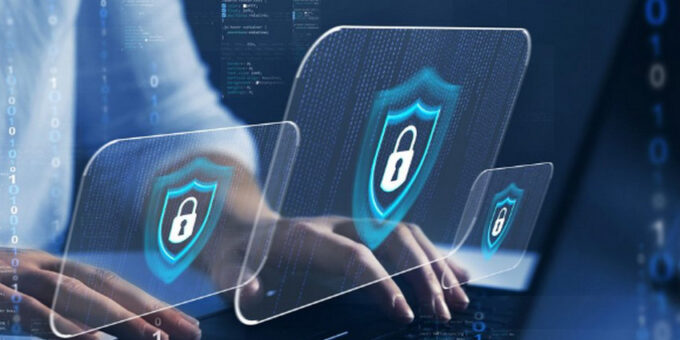
Cyber attacks are becoming more frequent and sophisticated. Protecting personal data is essential to prevent identity theft and financial loss. Hackers use various techniques to steal sensitive information, making cybersecurity awareness crucial.
Use Strong and Unique Passwords
Weak passwords are a hacker’s easiest way into your accounts. Always create strong passwords with a mix of letters, numbers, and symbols. Avoid using personal information like birthdays or names in passwords.
A password manager helps generate and store complex passwords securely. Changing passwords regularly adds another layer of security. Never reuse old passwords across multiple accounts.
Enable Two-Factor Authentication (2FA)
Two-factor authentication provides an extra security layer. Even if hackers steal your password, they can’t access your account without the second factor. Most websites offer 2FA through SMS, email, or authentication apps.
Using an authenticator app is safer than receiving SMS codes. Hackers can intercept text messages, making app-based authentication more secure. Always enable 2FA for banking, email, and social media accounts.
Keep Software and Devices Updated
Cybercriminals exploit outdated software to access devices and steal data. Regular updates fix security vulnerabilities and protect your system from attacks. Enable automatic updates to ensure your software stays current.
Operating systems, browsers, and antivirus programs should always run the latest versions. Hackers target unpatched software, making updates crucial for security. Never delay updates, as they often contain critical security fixes.
Avoid Public Wi-Fi for Sensitive Transactions
Public Wi-Fi networks are risky because hackers can intercept data. Avoid accessing banking or personal accounts while connected to public Wi-Fi. If necessary, use a virtual private network (VPN) for secure browsing.
VPNs encrypt internet traffic, preventing hackers from stealing sensitive information. Always turn off automatic Wi-Fi connections to avoid connecting to unsafe networks. Public hotspots are breeding grounds for cyber threats.
Be Cautious with Phishing Emails
Phishing attacks trick users into revealing personal information. Cybercriminals send fake emails pretending to be from trusted companies. These emails often contain malicious links or attachments.
Never click on suspicious links or download unknown attachments. Always verify the sender’s email address before responding. Banks and legitimate businesses never ask for sensitive details via email.
Use Secure Websites for Online Transactions
Always check for “https://” in the website URL before entering personal information. Secure websites encrypt data, making it harder for hackers to intercept. Avoid making payments on unfamiliar or unsecured websites.
Look for security badges and customer reviews before making online purchases. Scammers create fake websites to steal credit card details. Using virtual credit cards adds another layer of protection.
Monitor Your Accounts Regularly
Frequent account monitoring helps detect suspicious activity early. Review bank statements, emails, and online accounts for unauthorized transactions. Report any fraudulent activity immediately to prevent further damage.
Set up account alerts to receive notifications for login attempts or transactions. Quick action can prevent hackers from accessing your data further. Cybersecurity awareness reduces the risk of financial loss.
Be Careful with Social Media Sharing
Cybercriminals use social media to gather personal details. Avoid sharing sensitive information like addresses, phone numbers, or travel plans. Hackers exploit overshared data for identity theft and fraud.
Adjust privacy settings to restrict who can view your posts. Be cautious when accepting friend requests from strangers. Scammers create fake profiles to extract personal information.
Use Antivirus and Anti-Malware Software
A reliable antivirus program protects against malware, ransomware, and viruses. Regular scans detect threats before they cause damage. Always update security software to keep defenses strong.
Avoid downloading files or software from unknown sources. Hackers often disguise malware as legitimate downloads. Trusted security software prevents malicious programs from infecting your device.
Backup Important Data Regularly
Regular data backups protect against ransomware attacks and hardware failures. Store backups on external hard drives or cloud storage. Encrypt sensitive files to prevent unauthorized access.
Cloud backups ensure you don’t lose important files if your device gets hacked. Having multiple backup copies adds an extra layer of security. Losing data due to cyber attacks can be devastating.
Log Out of Accounts on Shared Devices
Always log out after using personal accounts on public or shared devices. Staying logged in increases the risk of unauthorized access. Cybercriminals exploit unattended accounts to steal information.
Clear browsing history and cookies to remove saved credentials. Never allow browsers to save passwords on shared computers. Taking precautions reduces the chances of cyber threats.
Educate Yourself About Cybersecurity Risks
Cyber threats evolve constantly, making cybersecurity education crucial. Stay updated on the latest scams and hacking techniques. Awareness helps prevent falling victim to online fraud.
Follow trusted cybersecurity blogs and forums for updates. Learning about new threats empowers users to take proactive measures. Cybersecurity knowledge is the first step to protecting personal data.
Conclusion
Protecting personal data from cyber attacks requires vigilance and proactive security measures. Strong passwords, software updates, and secure browsing habits reduce risks. Awareness and education are key to staying safe online. Taking cybersecurity seriously helps prevent identity theft and financial loss.